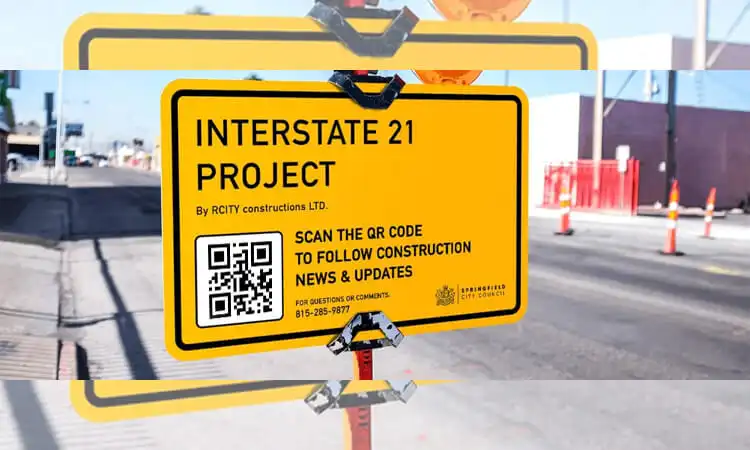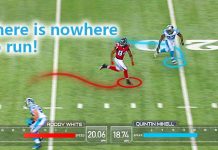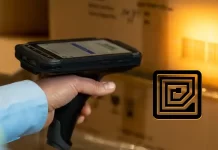Finding your way through bustling cities can be daunting in the ever-evolving urban landscape. But fear not, as QR codes on road signs rescue you. Backed by research and real-world facts, these innovative codes offer a seamless navigation experience, blending technology with the physical world effortlessly. Get ready to unlock a new era of urban exploration as we delve into the transformative power of QR codes on road signs.
The Benefits of QR Code Road Signs
QR codes on road signs offer a range of benefits for cities looking to modernize their infrastructure.
QR Codes on Road signs Enable Seamless Transmission of Information
People can access valuable information in seconds with a simple scan and connectivity.
For example, tourists visiting your city who want to learn more about a historic site can simply scan a QR code on the nearby street sign. This allows them to instantly access information about the site’s history, significance, and other details. By using QR codes on street signs, cities can provide a more engaging and interactive experience for visitors while also making it easier for locals to access information about their surroundings.
Related: An innovative way to attract visitors with museum QR codes
User-friendly and Convenient
QR codes on street signs are incredibly user-friendly and convenient, making them an ideal solution for busy urban environments. Anyone can easily scan the code and access the necessary information with a smartphone or a QR code reader app.
The process is simple and intuitive. Users can open their QR code reader app, point the smartphone camera at the QR code on the street sign, and wait for the app to recognize and decode the code. They will be directed to the relevant website or landing page within seconds to access the necessary information.
This ease of use and convenience is a major advantage of using QR codes on street signs. By making it easier for people to access information about their surroundings, cities can help visitors and locals alike engage more deeply with their environment and make the most of their time in the city.
QR Codes on Road Signs Provide Instant Access to Information and Services
QR codes on street signs are accessible to almost everyone, thanks to the widespread ownership of smartphones. In fact, in 2020, global smartphone users increased by 5.9 percent, reaching 3.6 billion users worldwide.
This means that QR codes are an ideal low-cost mobile solution for modernizing cities and making them more eco-friendly. Cities can provide instant access to information and services by taking advantage of the ubiquity of smartphones. This means they can do so without relying on expensive hardware or infrastructure.
Moreover, QR codes on street signs can help reduce paper waste and reduce the environmental impact of traditional signage. Cities can promote sustainability and reduce their carbon footprint by providing digital alternatives. It also provides a more convenient and engaging experience for visitors and locals.
Related: Introduction to QR code labels
Track, Edit, and Plan
QR codes on street signs enable cities to gather valuable insights into how people interact with local landmarks and attractions. By tracking metrics like the number of scans, device types, locations, dates, and times of scans, cities can gain a dynamic understanding of visitors’ interests and needs.
This data provides an invaluable roadmap for optimizing the city’s approach to engagement. By analyzing scan trends, cities can determine the most effective placement and design of QR codes and the content that most resonates with audiences.
For instance, if certain QR codes or types of content consistently attract the most scans, the city may prioritize those strategies in the future. Alternatively, underperforming QR codes could be repositioned or redesigned to suit users’ interests better.
Cities can use data to fine-tune their approaches to create more targeted and impactful experiences for all. An iterative, insight-driven process helps ensure that each new QR code campaign gains broader reach and sparks deeper engagement among both residents and visitors.
Related: How to Track QR Codes with Google Analytics?
Durable and Sustainable Solution
QR codes on street signs offer a durable and sustainable solution for delivering information and services to cities’ residents and visitors. Their resistance to damage from environmental factors like weather, scratches, and wear and tear allows them to withstand use for years with minimal maintenance required.
This durability translates to reduced costs and efforts over time. Unlike traditional print materials, QR codes on street signs do not require frequent replacement or repairs, saving cities money and resources. They can provide reliable access to information and services sustainably.
Moreover, the hardiness of QR codes ensures their ongoing effectiveness even in challenging outdoor conditions. They remain functional in harsh, real-world environments where other materials would quickly deteriorate. This makes them an ideal resilient infrastructure for cities seeking to future-proof their approach.
By choosing QR codes on road signs, cities gain a sustainable solution for engaging people and advancing their mission. The codes evolve from static signage into a dynamic and durable mechanism for sharing knowledge and fostering community. They can deliver value for years without compromise, as they were designed from the ground up for withstanding extensive use.
Using QR codes on Road signs Ways
QR codes on road signs offer a range of possibilities for modernizing city operations. It provides a more engaging and interactive experience for visitors and residents.
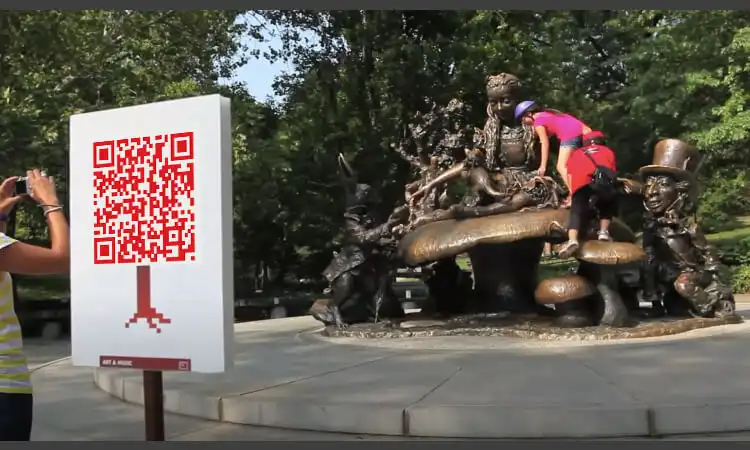
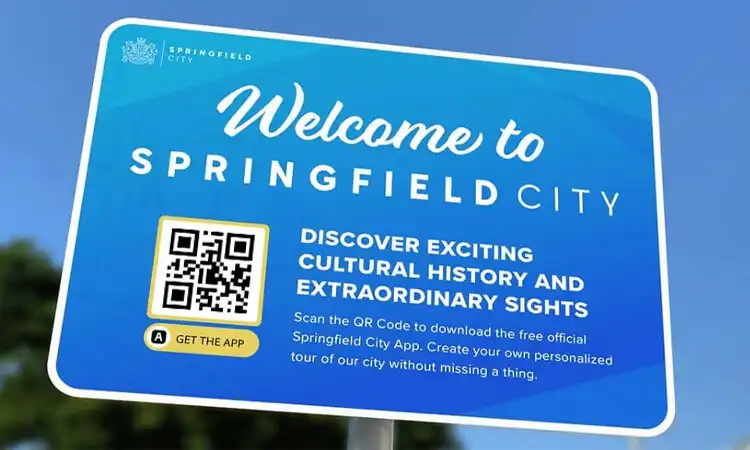
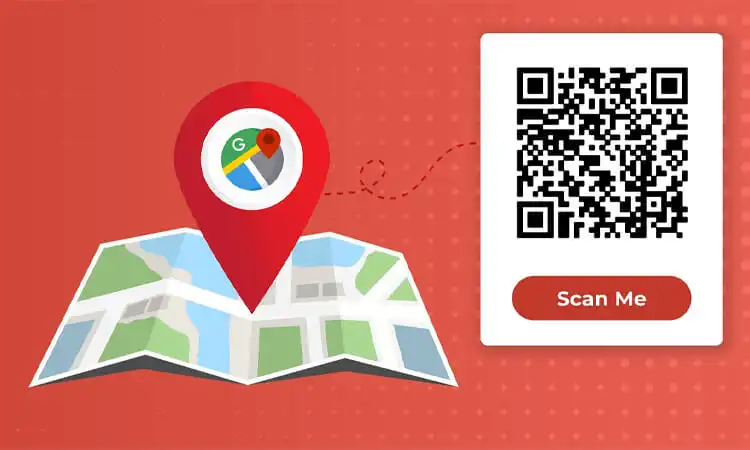
Make an Interactive One-stop Information Hub
QR codes on street signs enable cities to establish an interactive one-stop information hub for residents and visitors. By embedding links, files, and websites within the codes, cities can instantly provide access to crucial resources and services.
For example, a QR code could contain a link to a central repository of frequently needed government information and e-services. This would allow people to download files on demand for reference, even offline, enhancing convenience and empowerment.
Alternatively, a QR code could directly open a portal serving as a “one-stop-shop info hub.” The public could find details on transportation, tourism, local history, emergency resources, and more – all in one place. This holistic approach improves the customer experience while streamlining people’s ability to make informed choices and get things done.
Centralizing information in this way particularly benefits those frequently on the move. This includes parents, students, employees, employers, and investors. QR codes give them a quick and reliable mechanism for staying up-to-date with opportunities, requirements, and options wherever their day takes them.
Disseminating Information About Current Projects, Events, Announcements
QR codes on street signs enable cities to establish an interactive system for disseminating information about current projects, events, announcements, and other developments in the community. By converting their social media profiles into QR codes, cities can share updates and engage with residents and visitors in real time through a single touchpoint.
One key benefit of social media QR codes is consolidating all of a city’s social networks into a single code. When scanned, the code provides instant access to profiles across platforms like Facebook, Twitter, Instagram, and Nextdoor, allowing people to follow along with city news however they choose.
This fast, intuitive system fosters a more informed and involved community. People can quickly stay up-to-date on new initiatives, events, important notices, and other information shaping their city through a simple QR code. By promoting their social media profiles via street signs, cities build stronger engagement and better-informed audiences.
Social media QR codes also establish an eco-friendly and cost-effective methodology for communication. Rather than expending resources on printing physical materials, cities can achieve broader reach through digital distribution. By providing an alternative to traditional signage, they reduce environmental impact, costs, and maintenance needs while advancing their messaging.
Related: The Role of QR Codes in Social Media in the Post-Pandemic Era
In-depth Information on Tourist Attractions Through QR Code Signage
QR codes on street signs offer an innovative tool for educating tourists and engaging visitors with places of interest in a city. By converting multimedia content such as infographics, statistics, histories, and videos into QR codes, cities can seamlessly convey details about attractions, landmarks, and points of interest.
Visitors who scan a QR code instantly access tailored information that shapes their experience. For example, an infographic QR code could highlight key facts about a historical monument or museum’s origin, purpose, architecture, and relevance. This empowers people to appreciate locations deeper using their mobile devices.
Video QR codes provide an immersive alternative, transporting visitors to places they want to see most. Anyone scanning the code can access footage showing what it’s like to wander across scenic bridges, through botanical gardens, or within cultural heritage sites. This inspires in-person exploration and creates memories that last well beyond the trip.
Make It Easier for the Public to Find Designated Smoking Areas, Parking, and More Information
QR codes on street signs offer a convenient and effective way for cities to inform the public about designated smoking areas, parking lots, and other services. By using Google Maps QR codes, cities can embed Google Maps data into a QR code, making it easy for users to search for the nearest location.
For example, a Google Maps QR code could highlight the nearest smoking area or parking lot, providing essential information to residents and visitors alike. This helps to regulate smoking and other services while also ensuring that people have access to the information they need.
Furthermore, cities can create a map for tourist spots such as parks and beaches and convert it to a JPEG QR code. Once scanned, tourists can easily access and download the map on their smartphones for easy viewing. This allows them to easily navigate the area and find the needed services, such as restrooms, picnic areas, and more.
QR Code Sign for Business Information of Commercial Organizations
QR codes on road signs offer cities and businesses an innovative tool for promoting commerce, connectivity, and community well-being. By encoding essential details about commercial establishments within QR codes, stakeholders establish an interactive system enhancing access, navigation, and the overall experience of the place.
QR codes containing Google Maps data and location info make wayfinding seamless and optimized. Customers scanning a code outside an establishment gain instant access to its address, hours, services, and contact information – equipping them with knowledge facilitates an efficient, streamlined journey. This builds value at key touchpoints and fosters a transparent, collaborative approach to local commerce.
Similarly, QR codes linking to maps and step-by-step directions allow people to navigate directly to destinations on demand. Anyone scanning the code can instantly access multimedia guides providing quick orientation and on-the-go navigation support. This elevates the relevance of spaces and strengthens place-based bonds between businesses, residents, and visitors.
Seamlessly Integrating Mobile Apps
Mobile apps have become integral to our daily lives, and their integration with interactive street signs further enhances the urban exploration experience. By pairing QR codes with mobile applications specifically designed for urban navigation, users can unlock a range of additional functionalities. These apps can provide real-time updates on traffic conditions, public transportation schedules, nearby events, and even personalized recommendations based on user preferences. The seamless integration of QR codes and mobile apps empowers individuals to explore cities with confidence and convenience.
Connecting with Emergency Services
In addition to providing general safety information, interactive street signs with QR codes can establish a direct connection to emergency services. In case of an emergency, users can quickly scan the QR code on a street sign to alert authorities and provide their exact location. This feature can be invaluable in situations where immediate assistance is required. By incorporating QR codes into street signs, cities can ensure the safety and well-being of urban explorers.
How to Create a QR Code on Road Signs?
Creating a QR code on road signs is a simple process with the help of QR code solutions like QR TIGER. Here are the steps:
- Step 1: Choose a QR code generator. Select a free, easy-to-use tool for generating QR codes like QR TIGER, QR Code Monkey, or QR Code Generator. These allow you to create QR codes linking to URLs, contact info, maps, videos, and more.
- Step 2: Determine your QR code solution. Decide if you want to link a URL, contact details, map, directions, video, or other content. This will dictate the type of QR code you generate. URL QR codes link to websites, contact QR codes share info like addresses and phone numbers, map QR codes provide location details, etc.
- Step 3: Enter your content details. Input the website URL, contact info, map location, video embed code, or other information you want to link to or share via the QR code. Ensure any links or embed codes are active and working properly.
- Step 4: Choose static or dynamic QR codes. Static QR codes link to fixed content that does not change. Dynamic QR codes can link to frequently updated content, like news articles, social media profiles, or event calendars. Select based on how often your information changes.
- Step 5: Customize your QR code (optional). You can customize QR codes to match your brand or design. Choose from various QR code styles, add images, and logos, adjust colors, and more. Custom QR codes may be more eye-catching and help reinforce your messaging.
- Step 6: Test your QR code. Ensure your QR code is generated and scanned correctly before printing and distributing. Test scanning the QR code on multiple devices to validate functionality and links. Make any necessary adjustments to fix any issues found.
- Step 7: Print your QR codes on street signs. Once you have tested and finalized your QR codes, you can print them on durable street signs for outdoor display. Laminate signs for weather resistance and longer visibility.
Related: How to Add a QR Code to a Flyer (Guide)
How do I Scan a QR Code on a Street Sign?
To scan a QR code on a treet sign, follow these simple steps:
- Open the camera app on your smartphone or tablet.
- Point the camera towards the QR code on the street sign.
- A notification will appear, prompting you to open the link or access the information associated with the QR code.
- Tap the notification to open the link or access the information.
Best Practices When Creating QR Codes on Road Signs
Creating QR codes on road signs is an effective way to provide information to the public. Still, it is important to follow best practices to ensure they are easily scannable and effective. Here are some tips to help you design your QR codes wisely:
Limit Colors and Avoid Oversaturation
Too many bright colors or heavily saturated hues can make QR codes difficult to scan. Use colors in moderation and ensure adequate contrast between foreground (text and images) and background colors.

Related: Sample QR Codes for Testing Types
Contrast Foreground and Background Colors
The foreground color ( text, logos, images) should be darker than the background color. High contrast helps QR code scanners quickly distinguish code elements and scan the code accurately.
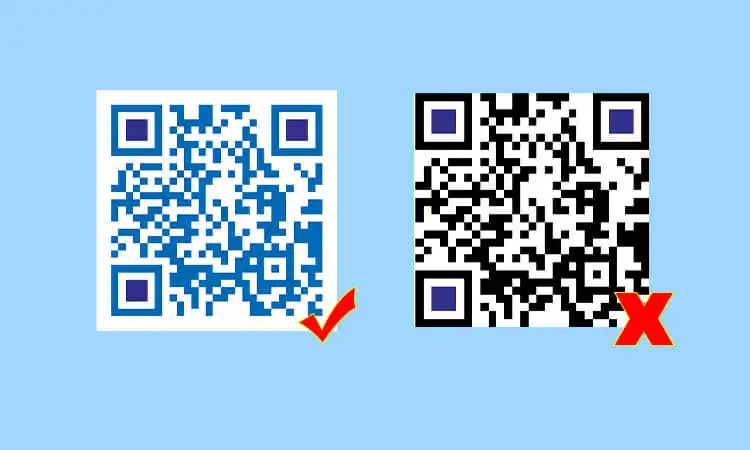
Choose Color Combinations Carefully
While limiting colors is best, choose hue combinations that provide aesthetic appeal and brand consistency. Complementary, analogous, or split complementary color schemes often work well for QR codes. Avoid similar shades that may blur together.
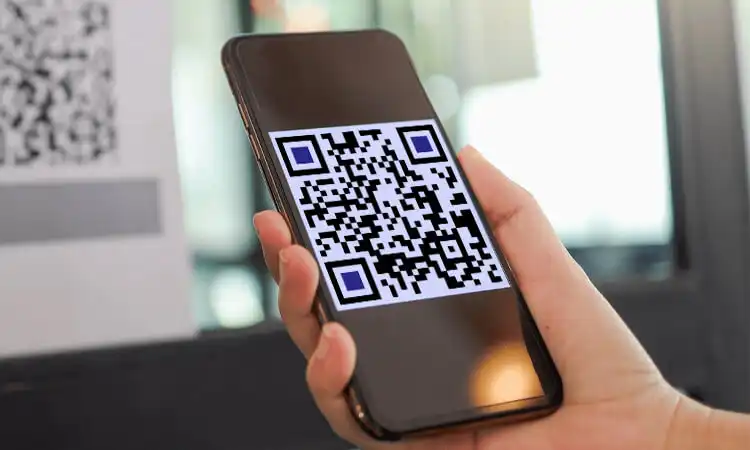
Ensure Text Remains Legible
Regardless of the chosen colors, legible text is essential for QR codes. Use a simple, clean font and adequate text size so all code details are easily readable. Twisted, condensed, or ornamental fonts can compromise scanability.
Maintain Adequate White Space
Leave adequate blank space around text, images, and the QR code border. Too little white space can make a QR code feel cramped, messy, and difficult to scan. Equal margins on all sides provide an open, balanced feel.
Consider a Border (Optional)
A border around the QR code helps define its shape and can enhance legibility. However, borders are not required for QR codes, and too wide a border wastes space that could feature more content. Use borders judiciously, if at all.
Test and Validate Your QR Codes
The only way to ensure QR codes on street signs will scan properly is to test them. Try scanning your codes on multiple devices to check for any issues. Make any necessary color adjustments, sizing, spacing, or other elements to fix any problems before printing signs.
Related: QR Code Test: Everything You Need To Know
Review and Reprint as Needed
QR codes that were scanned may stop working over time due to weathering, damage, or changes in technology/software. Regularly review your QR codes on street signs to determine if any need reprinting to avoid confusion, broken links, or accessibility issues. Stay up-to-date to keep providing value.
Promote and Build Awareness
Educate the community on the benefits and resources accessible through your QR code street signs. Using social media, newsletters, events, and word-of-mouth, spread awareness of QR codes to increase usage and boost engagement. Help people discover all they offer!
Examples of Implementation QR Codes on Street Signs in Different Cities
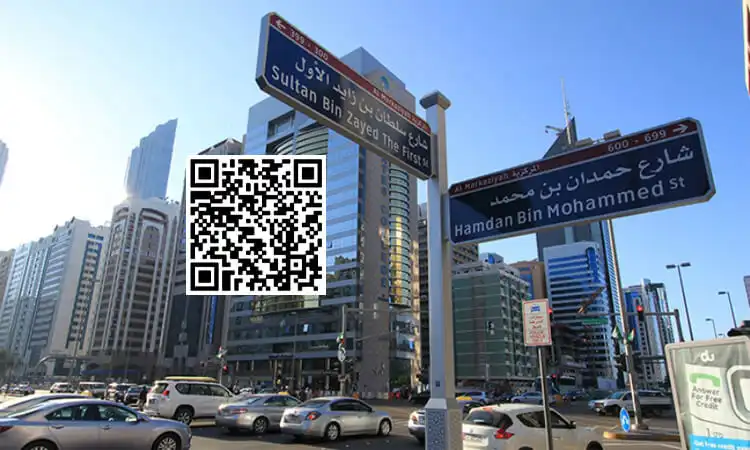
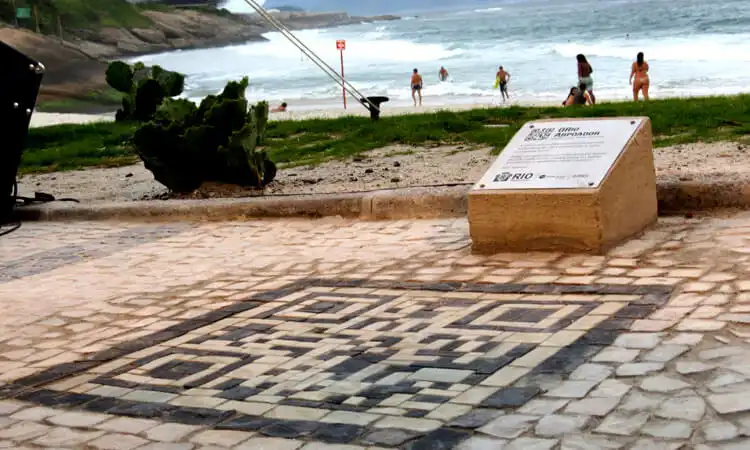
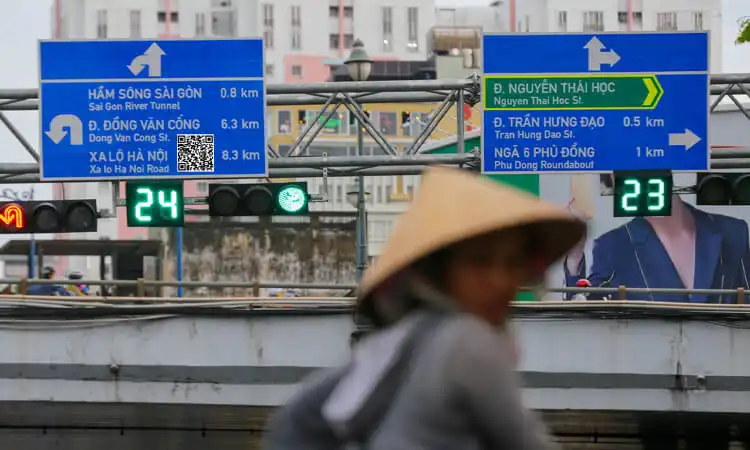
Abu Dhabi City
Abu Dhabi City is a great example of how QR codes on street signs can be used for various purposes. Here are some of the ways Abu Dhabi City has implemented QR codes:
- Historical and background information: QR codes are used to provide tourists with historical and background information about the streets in the city. Scanning the QR code allows visitors to learn about the street’s history and meaning, adding a unique and interesting aspect to the city’s streets.
- Locating points of interest: QR codes help people locate the nearest points of interest, such as tourist attractions, restaurants, and shops. This makes it easier for visitors and residents alike to navigate the city and find what they need.
- Event information: QR codes are used to inform the public of local events in the area, such as concerts, festivals, and exhibitions. This helps to promote community engagement and encourages attendance at local events.
- Location sharing: The public can easily send a QR code to their family and friends to help them locate a specific place instead of giving detailed directions. This makes it easier for people to meet up and find each other in a busy city.
- Emergency services: Emergency service providers, utilities, and delivery personnel can also use QR codes to locate a place accurately, according to the city. This can help to improve response times and ensure help arrives quickly in times of need.
Ho Chi Minh City
In Ho Chi Minh City, the largest city in Vietnam, QR codes on road signs are being piloted to provide detailed information about the city’s streets. Scanning the QR code displays an image file containing information about the street’s location, history, length, width, and a brief biography of a famous street.
To cater to tourists and ensure a wider reach, the information embedded in the QR code is available in both Vietnamese and English. This helps to make the city more accessible and informative for visitors, promoting cultural exchange and understanding.
Rio de Janeiro
Rio de Janeiro, the capital of Brazil, has installed approximately 30 QR codes at beaches, vistas, and historic sites across the city. The initiative aims to engage the growing number of foreign visitors and allow them to learn about the city as they explore its many attractions.
When visitors scan the QR codes, they are directed to a website containing information about the tourist spot, including maps, history, and Portuguese, Spanish, and English highlights. This makes it easier for visitors to access information about the city’s attractions, enhancing their experience and helping them to make the most of their time in Rio.
Richland County in South Carolina
The Richland County Regional Planning in South Carolina has implemented QR codes in its bike trail signage as part of a new wayfinding campaign to guide trail users. The QR codes provide access to information such as the distance in walking or cycling time to nearby businesses, services, and parks in the area.
The QR code signage also redirects users to Google Maps directions, making locating a place easier. This provides a convenient and accessible way for users to navigate the bike trail and access information about nearby attractions and services.
QR codes transform how cities provide information and engage stakeholders. By encoding essential data within QR codes on street signs, cities forge smarter, more seamless connectivity across groups. Visitors gain insights, residents access key services, and teams optimize operations. QR codes empower discovery, enhance inclusion and build equity while advancing sustainability and shared vision. QR codes craft a progressive ecosystem empowering personal discovery and place-based connection.
Read More: 12 Great Ideas for Using QR Codes in the Classroom
About QR Codes on Road Signs Problem
-
Q1: What information can QR codes on road signs provide about local attractions, events, and services?
A1: QR codes on street signs provide information on attractions like museums/parks, events such as festivals/concerts, and services such as transit schedules/parking/ADA features.
-
Q2: How do QR codes transform how municipalities share spatial details and deliver on core responsibilities?
A2: QR codes transform how cities share spatial details and responsibilities by enabling intuitive, tech-enabled information sharing across teams.
-
Q3: What benefits do QR codes provide for informing and connecting citizens, visitors, emergency personnel, utility teams, delivery agents, and more?
A3: QR codes on street signs offer a scalable system to inform/connect diverse stakeholders through on-demand access to knowledge relevant to each group’s needs/roles.
-
Q4: How do QR codes establish an intuitive, eco-friendly infrastructure for engagement, wayfinding, and optimized services?
A4: QR codes establish an eco-friendly infrastructure for engagement, wayfinding, and optimized services by encoding multimedia content customized for stakeholders into a digital format.
-
Q5: What is the simple, impactful mechanism that QR codes provide for disseminating information, enabling inclusion, and fueling progress?
A5: QR codes offer a simple, impactful mechanism for disseminating information. It enables inclusion and fueling progress through on-demand access to tailored knowledge and resources.
-
Q6: How do QR codes adapt infrastructures to support modern stakeholders while advancing equity, efficiency, and environmental responsibility?
A6: QR codes adapt infrastructures to support modern stakeholders while advancing equity, efficiency, and environmental responsibility by distributing information in a digital, scalable format.
-
Q7: How do QR codes on street signs reshape how data and details reshape experiences, bringing people together around shared goals and collective potential?
A7: QR codes on street signs reshape how data and details reshape experiences. It connects people around shared goals and collective potential by establishing connectivity between places, knowledge, communities, and the future.
-
Q8: Do I need a special app to scan QR codes on street signs?
A8: No, you do not need a special app to scan QR codes on street signs. Most modern smartphones and tablets come with built-in QR code scanning capabilities. Simply point the camera toward the QR code, and a notification will appear, allowing you to access the information or open the associated link. However, dedicated QR code scanning apps are available for download if you prefer to use them.
-
Q9: Are QR codes on road signs available in multiple languages?
A9: Yes, many interactive street signs with QR codes are designed to support multiple languages. This feature caters to both local residents and international tourists, ensuring that everyone can access the information regardless of their preferred language. When scanning the QR code, users may have the option to select their preferred language for a more personalized experience.
-
Q10: Can I use QR codes on street signs without an internet connection?
A10: In most cases, an internet connection is required to access the information linked to QR codes on street signs. The QR code bridges the physical sign and the digital content, which is hosted online. However, some mobile apps may offer offline functionality, allowing users to download specific data or maps in advance for offline access. It is recommended to have an internet connection for the best experience with interactive street signs.


